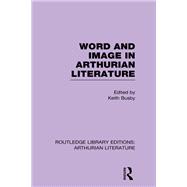Word and Image in Arthurian Literature
, by Busby, Keith- ISBN: 9780815320500 | 0815320507
- Cover: Hardcover
- Copyright: 10/1/1996
With one exception, the articles in this book are revised and expanded papers from the "Word and Image" sessions at the XVIIth International Congress of the Arthurian Society, held in Bonn, Germany, 23-30 July, 1993. Together, they represent a number of directions Arthurian studies is presently taking. There is renewed attention to the Old FrenchLancelot-Graalcycle and the proseTristan(Blackman, Dover, Thibault Schaefer, Stones, Walters), analysis of the survival of medieval themes in post-medieval forms of Arthuriana (Hoffman), and the enduring interest in the romances of Chr tien de Troyes (Carroll, Vauthier). There is a penetrating analysis of the visual representations of theTristanstory, with particular reference to German material (Van D'Elden; see also Thibault Schaefer), and the first treatment of Arthurian illustrations of Middle Dutch (Meuwese). Also included is an article on Spenser (Mazzola) that illustrates another form of the relationship between word andimage. Common to all of the articles is a close attention to the historical contexts in which the works and manuscripts in questions were produced. This collection is a real contribution to the study of manuscripts and other objects as cultural artifacts, and not merely as texts. As such, it helps us towards a fuller appreciation of what they may have meant to those who possessed them and the manner in which they were received both synchronically and diachronically in the Middle Ages and beyond.






